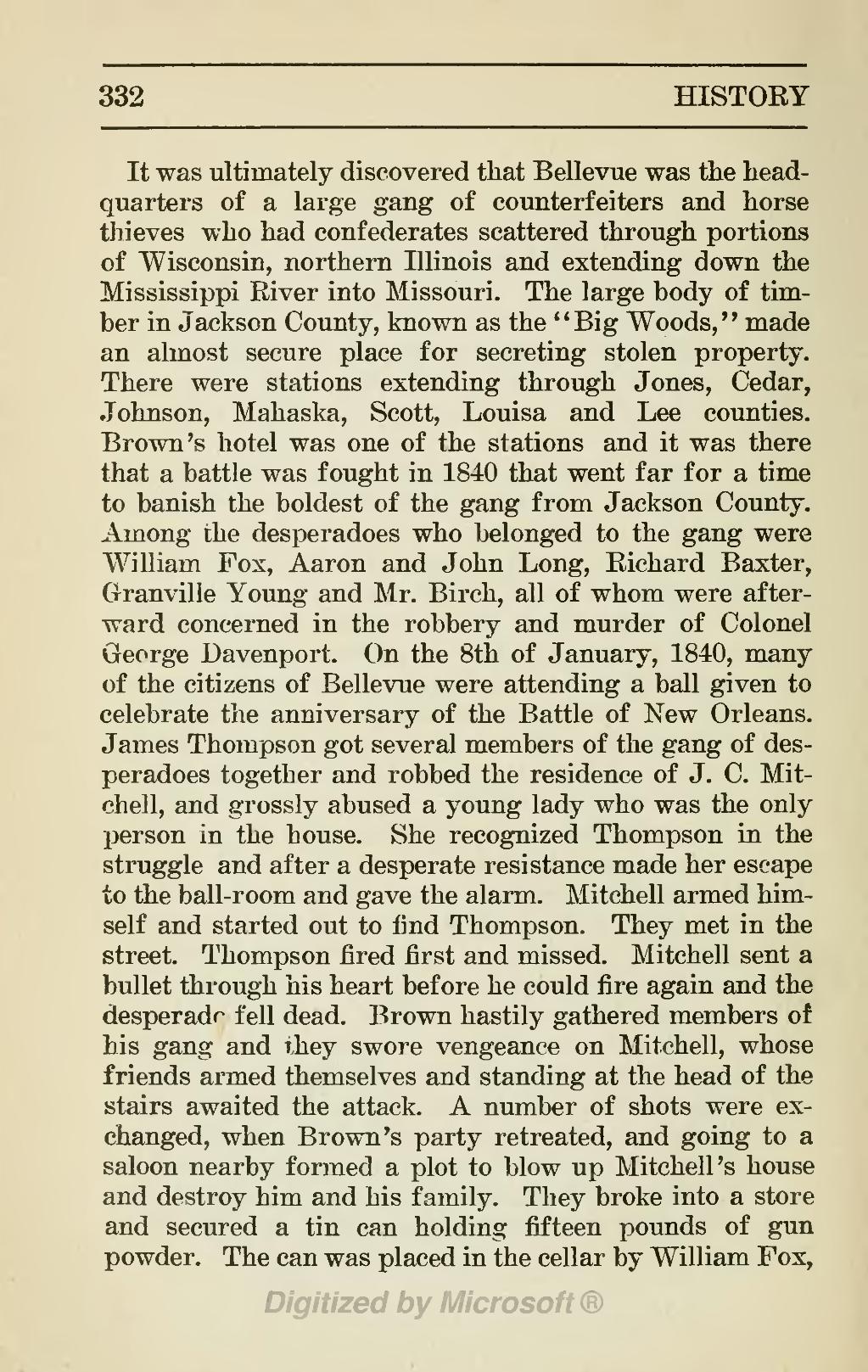| 332 | HISTORY |
It was ultimately discovered that Bellevue was the headquarters of a large gang of counterfeiters and horse thieves who had confederates scattered through portions of Wisconsin, northern Illinois and extending down the Mississippi River into Missouri. The large body of timber in Jackson County, known as the “Big Woods,” made an almost secure place for secreting stolen property. There were stations extending through Jones, Cedar, Johnson, Mahaska, Scott, Louisa and Lee counties. Brown’s hotel was one of the stations and it was there that a battle was fought in 1840 that went far for a time to banish the boldest of the gang from Jackson County. Among the desperadoes who belonged to the gang were William Fox, Aaron and John Long, Richard Baxter, Granville Young and Mr. Birch, all of whom were afterward concerned in the robbery and murder of Colonel George Davenport. On the 8th of January, 1840, many of the citizens of Bellevue were attending a ball given to celebrate the anniversary of the Battle of New Orleans. James Thompson got several members of the gang of desperadoes together and robbed the residence of J. C. Mitchell, and grossly abused a young lady who was the only person in the house. She recognized Thompson in the struggle and after a desperate resistance made her escape to the ball-room and gave the alarm. Mitchell armed himself and started out to find Thompson. They met in the street. Thompson fired first and missed. Mitchell sent a bullet through his heart before he could fire again and the desperado fell dead. Brown hastily gathered members of his gang and they swore vengeance on Mitchell, whose friends armed themselves and standing at the head of the stairs awaited the attack. A number of shots were exchanged, when Brown’s party retreated, and going to a saloon nearby formed a plot to blow up Mitchell’s house and destroy him and his family. They broke into a store and secured a tin can holding fifteen pounds of gun powder. The can was placed in the cellar by William Fox,
